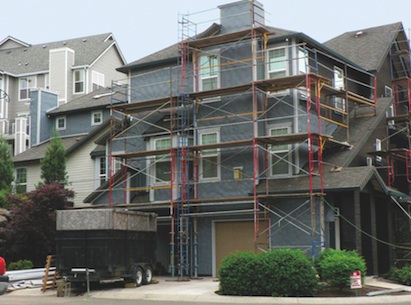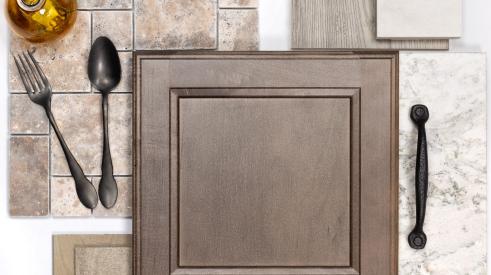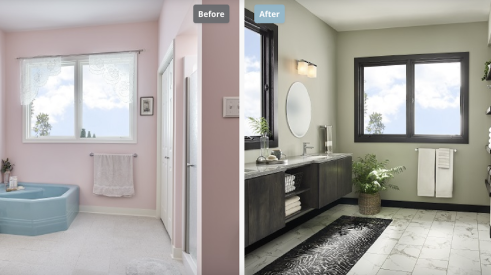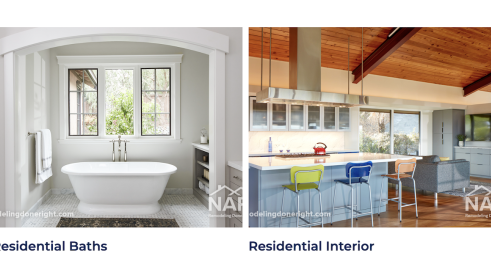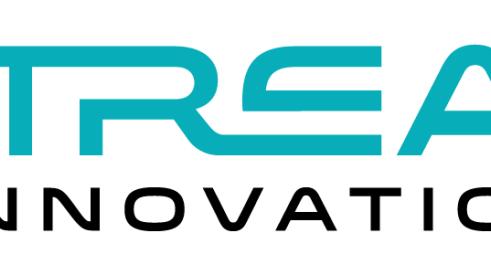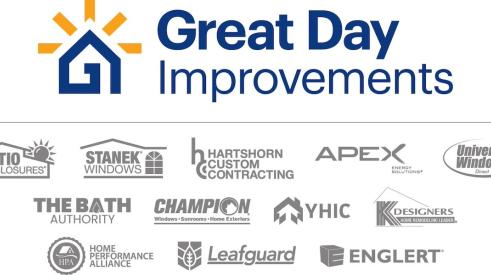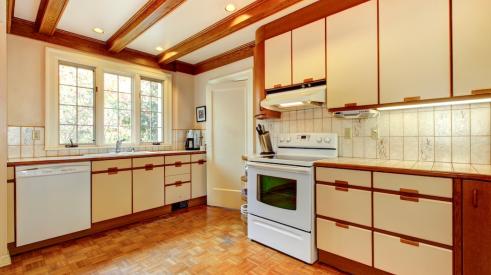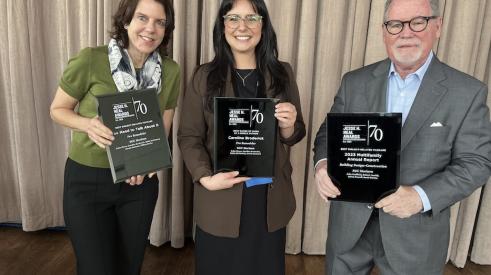Enclosure walls with a rainscreen function are becoming increasingly common. Proper moisture management techniques are critical to the performance and life span of a structure as well as the comfort and health of occupants.
Designers are acknowledging that old-style face-sealing methods were not effective in preventing the ingress of water. Water, both as liquid and vapor, accumulates within the wall system and affects moisture-sensitive wall components. This is energy inefficient as the insulation becomes wet and cannot perform. Even worse, the building can begin to decay.
The concept of a rainscreen is not new. Traditionally, any wall system that has space between the exterior cladding and the sheathing that can drain water to the exterior could be considered a form of rainscreen. One common example is standard brick veneer walls. These are constructed with an airspace between the brick and the sheathing with weep holes for drainage. Another example is wood furring strips.
These are applied over a substrate to give the final cladding a standoff, also creating a space for drainage. It is the capability to drain bulk water on which conventional design wisdom has focused.
Rainscreens have evolved beyond the simple function of drainage to become integral to the performance of the entire system, including the insulation and the cladding.
Of course, drainage is a key function of any rainscreen. This is addressed by ICC AC356 Acceptance Criteria for Moisture Drainage Systems used with Exterior Cement Plaster or Adhered Masonry Veneer Walls. It applies only to rainscreen systems going over a wood-based sheathing and behind standard stucco or manufactured stone veneer. AC356 does include other criteria, such as UV resistance, aging, weathering and fungi resistance. For the most part, it is still a typical water in/water out test, requiring 75 percent of the water put in to the system to drain out (measured by weight). This does, however, represent the generally accepted industry thought on the topic of rainscreens.
Barrier Project Application
Without a doubt, drainage is a critical component of any rainscreen. What this test (and others similar to it) doesn’t answer is what happens to the water remaining in the system. In absolute terms, nobody knows exactly how much is safe to leave behind. According to AC356, 25 percent of the water can remain. That could be a lot of water if there is a major wetting event.
Mold growth is the result of high moisture content at the right temperature for the right length of time. Depending on the temperature and moisture content, that time could be as little as one day. Returning the moisture level to below the danger zone as quickly as possible before mold can begin to take hold is very important.
Proper ventilation of the cavity improves drying. Improved drying means that the moisture remaining in the wall system can be removed as quickly as possible, adding a significant safety buffer against mold and rot. Relative humidity levels within the wall are brought down using natural buoyancy of air. Warm air rises, flowing out the top, carrying moisture with it, and cooler, drier air flows in the bottom to replace it.
Solar-driven moisture is another source of potentially damaging moisture traditional rainscreen configurations are not designed to manage. Solar-driven moisture occurs with any absorptive cladding, like three coat stucco or manufactured stone veneer. During any wetting event, such as rain or irrigation, these claddings absorb water like a sponge because they are very porous. When the sun comes out and begins heating the wall, the claddings appear as if they are drying because the surface looks dry, but, in fact, water has soaked in. The surface becomes hot, creating an area of high moisture vapor pressure that effectively acts as a barrier to any outward drying. The moisture vapor instead moves inward, where it is cooler and the moisture vapor pressure is lower.
Full spectrum protection with a rainscreen means more than just draining bulk water. It will provide additional drying capability and protection against relative humidity build-up through ventilation. This ensures any moisture not drained by gravity is dried by air, providing a significant safety buffer against mold and rot. The issue of solar-driven moisture can be a little more difficult to understand, but is no less significant if you have stucco or manufactured stone cladding. Managing moisture from all sources will mean a comfortable and healthy living environment for many years.
Building Science content is provided by Professional Remodeler in partnership with the Energy & Environmental Building Alliance and its National Education Partners. For more information on building science education, visit eeba.org.
Proper moisture management techniques are critical to the performance and life span of a structure
Add new comment
Related Stories
Peppermill Finish
NAHB Announces Action Plan for Housing Affordability
Six of the proposed 10 action items are important to residential remodelers
Re-Bath Expands its Reach with New Franchise
The company signs a deal with brothers who are first-time franchisees
NARI Renames Awards Program
The awards program has a new name, but continues its tradition of recognizing the best in residential remodeling
Registration Open for Women in Residential+Commercial Construction Conference 2024
Join 300+ women in construction for three days of impactful idea-sharing and networking in Phoenix
Power Home Remodeling Expands Financing Offshoot with $400M from Goldman Sachs
Industry-leading home improvement company Power plans to grow its fintech offshoot fivefold with new investment
Great Day Improvements Acquires LeafGuard and Englert
Leading home improvement company Great Day Improvements purchases two major brands from private equity firm Audax
Metros with the Highest and Lowest Remodel ROI
First-time homebuyers can find fixer-upper listings priced between 5 to 10% lower than move-in ready homes. The high return on investment of these projects shows that remodeling remains a strong option to navigate the current housing market
Latest Private Equity Activity Signals Continued Strength in Home Improvement
A hot month for private equity means the industry remains opportunity-rich
Pro Remodeler Wins Two Prestigious Jesse H. Neal Awards
The editorial team was honored with one of B2B journalism's most prestigious awards in the categories of Best Subject-Related Package and Best Range of Work by a Single Author



